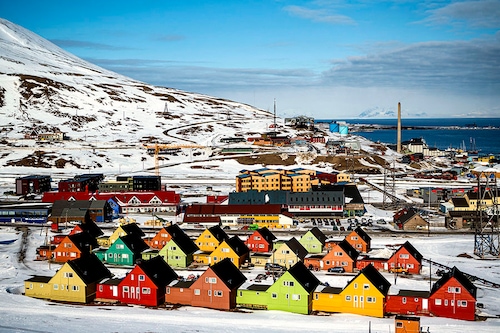Thawing permafrost in Norway could release unexpected quantities of methane
In addition to the threat posed by climate change, oil and gas operations located close to areas of permafrost accelerate its thaw


A study carried out in Norway suggests that accumulations of natural gas trapped deep in the permafrost are far more common than previously thought. These accumulations are a consequence of drilling wells, dug over centuries on expeditions to locate fossil fuel.
On the Norwegian archipelago of Svabard, located east of Greenland in the heart of the Arctic Ocean, methane emissions from the land are accumulating under the permafrost in worrying quantities. This was the finding of a study published in the journal Frontiers in Earth Science. "At present, the leakage from below permafrost is very low, but factors such as glacial retreat and permafrost thawing may "lift the lid" on this in the future," explains Dr Thomas Birchall, lead author of the study and researcher at the University Center in Svalbard.
A major carbon sink, permafrost is the term used to describe the ice-covered layer of land that extends over around 20% of the planet"s surface in the northern hemisphere, mainly around the Arctic region between Canada and Siberia. This ground remains permanently frozen for at least two consecutive years, capturing numerous emissions of CO2, methane and even pathogens like bacteria or viruses! But global warming is contributing to these areas thawing at an alarming rate, as several studies published in recent months and years have shown.
In addition to the threat posed by climate change, oil and gas operations located close to areas of permafrost accelerate its thaw. It is precisely these drilling wells that the authors of this research have scrutinized, in order to map Svalbard"s permafrost and identify accumulations of gas in the permafrost. The researchers warn that these gas accumulations are proving to be "an unexpectedly frequent finding." Analysis of 18 hydrocarbon exploration wells drilled in Svalbard revealed that half of these "show evidence of a gas accumulation," the study states. "The gas, combined with the relatively young permafrost age, is evidence of ongoing gas migration throughout Svalbard," the researchers write in the study.
"These things seem to be common. One anecdotal example is from a wellbore that was drilled recently near the airport in Longyearbyen. The drillers heard a bubbling sound coming from the well, so we decided to have a look, armed with rudimentary alarms designed for detecting explosive levels of methane — which were immediately triggered when we held them over the wellbore," outlines Dr. Birchall in a release. "If the consistently frozen permafrost grows thinner and patchier, this methane could find it ever easier to migrate and escape, possibly accelerating global warming and exacerbating the climate crisis," the researchers conclude.
Another study published in early December in Nature Geoscience warns of possible leakage of methane hydrate, the solid form of this greenhouse gas stored in the depths of the oceans. This research shows that, under the effect of rising atmospheric temperatures, methane hydrate is also likely to dissolve and "migrate" tens of kilometers. This is a direct consequence of warming waters caused by climate change.
First Published: Dec 16, 2023, 10:36
Subscribe Now